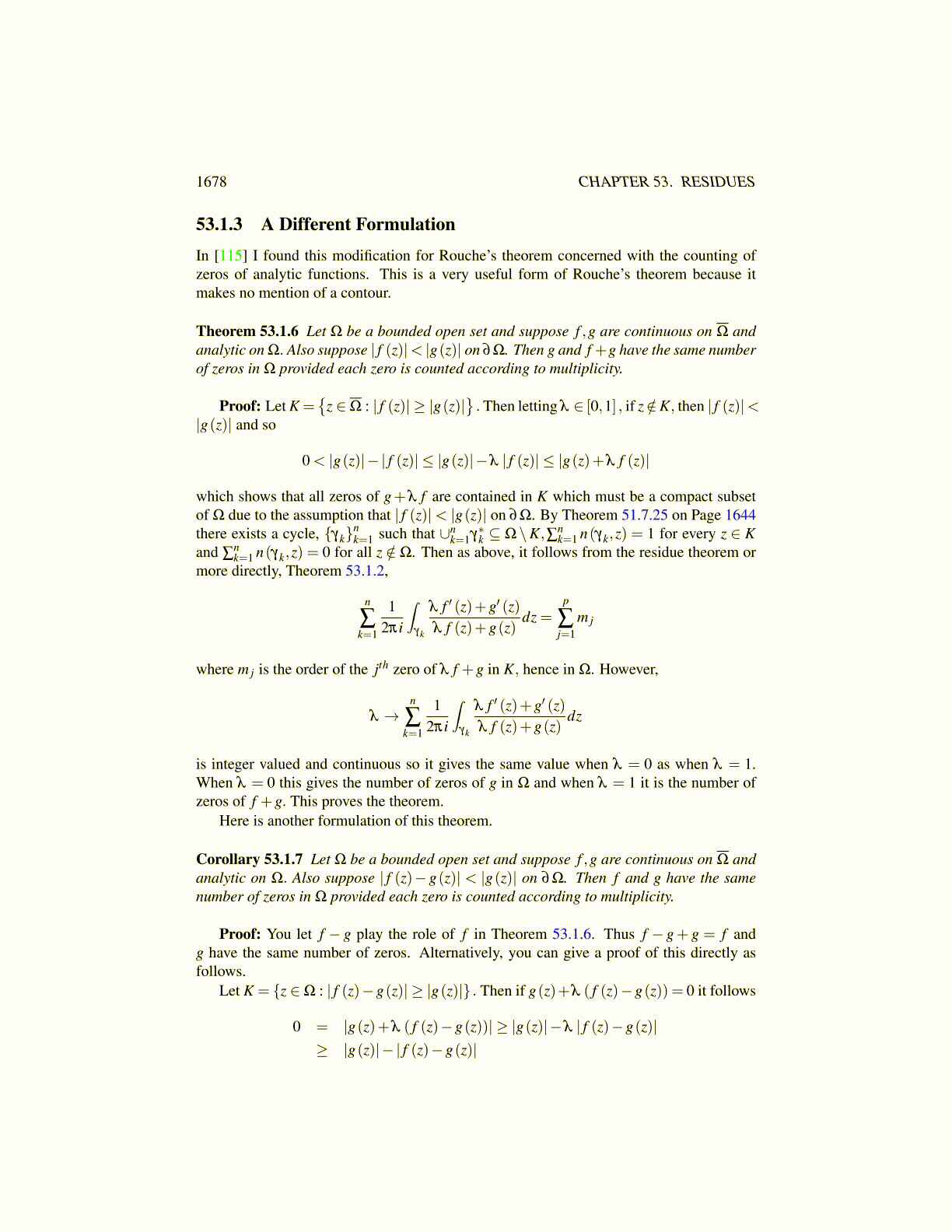
1678 CHAPTER 53. RESIDUES
There is also a simple extension of this important principle which I found in [65].
Theorem 53.1.3 (argument principle) Let f be meromorphic in Ω. Also suppose γ∗ is aclosed bounded variation curve with the property that for all z /∈Ω,n(γ,z) = 0 and for allz ∈ Ω,n(γ,z) either equals 0 or 1. Now let {p1, · · · , pm} and {z1, · · · ,zn} be respectivelythe poles and zeros for which the winding number of γ about these points equals 1 listedaccording to multiplicity. Thus if there is a pole of order m there will be this value repeatedm times in the list for the poles. Also let g(z) be an analytic function. Then
12πi
∫γ
g(z)f ′ (z)f (z)
dz =n
∑k=1
g(zk)−m
∑k=1
g(pk)
Proof: This theorem follows from computing the residues of g( f ′/ f ) . It has residuesat poles and zeros. I will do this now. First suppose f has a pole of order m at α. Then fhas the form given in 53.1.3. Therefore,
g(z)f ′ (z)f (z)
=g(z)
(h′ (z)−∑
mk=1
kbk(z−α)k+1
)h(z)+∑
mk=1
bk(z−α)k
= g(z)h′ (z)(z−α)m−∑
m−1k=1 kbk (z−α)−k−1+m− mbm
(z−α)
h(z)(z−α)m +∑m−1k=1 bk (z−α)m−k +bm
From this, it is clear res(g( f ′/ f ) ,α) = −mg(α) , where m is the order of the pole. Thusα would have been listed m times in the list of poles. Hence the residue at this point isequivalent to adding −g(α) m times.
Next suppose f has a zero of order m at α. Then
g(z)f ′ (z)f (z)
= g(z)∑
∞k=m akk (z−α)k−1
∑∞k=m ak (z−α)k = g(z)
∑∞k=m akk (z−α)k−1−m
∑∞k=m ak (z−α)k−m
and from this it is clear res(g( f ′/ f )) = g(α)m, where m is the order of the zero. Theconclusion of this theorem now follows from the residue theorem, Theorem 53.0.3.
The way people usually apply these theorems is to suppose γ∗ is a simple closedbounded variation curve, often a circle. Thus it has an inside and an outside, the outsidebeing the unbounded component of C\γ∗. The orientation of the curve is such that you goaround it once in the counterclockwise direction. Then letting rk and lk be as described, theconclusion of the theorem follows. In applications, this is likely the way it will be.
53.1.2 Rouche’s TheoremWith the argument principle, it is possible to prove Rouche’s theorem . In the argumentprinciple, denote by Z f the quantity ∑
mk=1 rk and by Pf the quantity ∑
nk=1 lk. Thus Z f is the